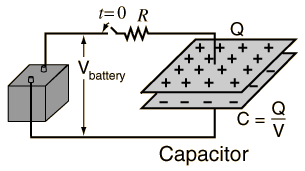6
663697
During charging, four microcoulombs of negative charge are transferred from one plate of an 8 uF capacitor to the other plate. How much work was done by the electric field during this charging process?
a. -4 uJ
b. -1 uJ
c. 1 uJ
d. 4 uJ
Why is it necessary to use E = (1/2)*q^2*C for this question? Since it is asking for the work done, wouldn't it be more appropriate to use W = q^2 * C? Can somebody please explain in which situations either equation is more appropriate?
a. -4 uJ
b. -1 uJ
c. 1 uJ
d. 4 uJ
Why is it necessary to use E = (1/2)*q^2*C for this question? Since it is asking for the work done, wouldn't it be more appropriate to use W = q^2 * C? Can somebody please explain in which situations either equation is more appropriate?


